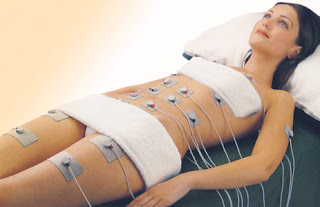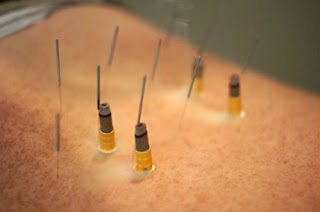One particular niche of microcurrent treatment is for cancer patients who develop progressive fibrosis of the head, neck and supraclavicular areas after aggressive cancer therapy. The combination of surgery, chemotherapy and radiotherapy required to treat the cancer results in pain and limitations in all planes of movement, secondary to scar tissues.
The use and possible benefits of microcurrent therapy in this particular population was realised mostly by chance when its use for a surgical scar also resulted in additional benefits, significantly reducing erythema and muscositis in a patient treated with radiotherapy for a salivary gland malignancy.
The pilot study investigated the effect of microcurrent therapy on cervical range of movement (rotation, flexion, extension and lateral flexion), subjective complaints and the ability to open the mouth, or trismus, in 26 patients. Measurements were taken before and after each treatment and monthly for three months.
Despite the small population group, the results of the treatment could be considered encouraging, and definitely warrant further investigation. The main findings of the investigation are summarised below:
· 92% of patients had improvements in cervical rotation.
· 85% of patients had improvements in cervical flexion and extension.
· 81% of patients had improvements in cervical lateral flexion.
· 75% of patients complaining of trismus improved and maintained oral opening by 4.6±2.2 mm.
· Some patients improvements were maintained during a three month follow up period.
Improvements in Subjective Complaints
Patients reporting improvement (%)
Tongue immobility
|
3/8 (37)
|
Impaired speech
|
3/6 (50)
|
Stiffness discomfort
|
24/26 (92)
|
Facial asymmetry
|
6/7 (86)
|
Soft tissue edema
|
11/17 (65)
|
Trismus
|
10/16 (62)
|
Dry mouth
|
15/20 (75)
|
Difficulty swallowing
|
4/10 (40)
|
Cervical/facial spasms
|
10/12 (83)
|
Fibrosis
|
12/20 (60)
|
Inability to purse lips
|
5/5 (100)
|
Difficulty breathing
|
3/3 (100)
|
Tenderness
|
10/15 (67)
|
Pain
|
9/13 (69)
|
Numbness
|
6/8 (75)
|
A few other interesting bits and pieces:
· The machine used in this clinical investigation was a Electro-Myopulse 75F instrument, which has a retail price of about $8500 per unit.
· An alternating microampere current at frequencies ranging from 0.5 to 100Hz was applied.
· Treatment time was approximately 30 minutes, with electrode an electrode taped to the scapula closest to the affected tissue. A moveable electrode in the form of a cylindrical roller was then applied across the affected areas.
· The degree of improvement directly correlated to the severity of the limitations.
 |
Application method of microcurrent on the fibrotic supraclavicular
and neck tissues used in the study.
|
Despite the fact that this was just a pilot study and not designed as a randomised, controlled trial, the findings are encouraging. Considering the ease of application and the low patient burden, the possibility that microcurrent can reduce functional limitations, severity of symptoms and increase quality of life for this patient population is definitely one of interest and further investigation.
REFERENCES
Lennox, A. J., Shafer, J. P., Hatcher, M., Beil, J. & Funder, S. J. (2002). Pilot study for impedence- controlled microcurrent therapy for managing radiation-induced fibrosis in head-and-neck cancer patients, International Journal of Radiation Oncology, 54(1), 23-34.
 The important points of microcurrent
The important points of microcurrent · There should be no sensation or contraction as the intensity is below that which is required to stimulate the sensory fibres or motor fibres
· There should be no sensation or contraction as the intensity is below that which is required to stimulate the sensory fibres or motor fibres






